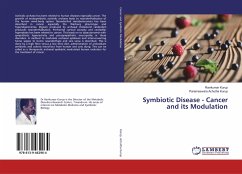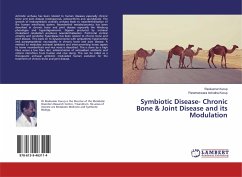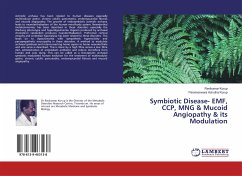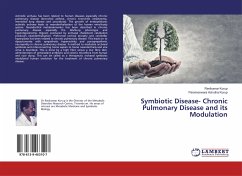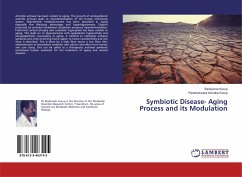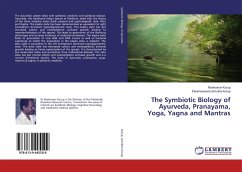
The Symbiotic Biology of Ayurveda, Pranayama, Yoga, Yagna and Mantras
Versandkostenfrei!
Versandfertig in 6-10 Tagen
51,99 €
inkl. MwSt.

PAYBACK Punkte
26 °P sammeln!
The Ayurvedic system deals with symbiotic medicine and symbiotic disease. Ayurveda, the traditional Indian System of Medicine, deals with the theory of the three tridosha states (both physical and psychological): Vata, Pitta and Kapha. The kapha state has been demonstrated as equivalent to right hemispheric dominant hyperdigoxinemic state. This kapha state has got increased colonic and endosymbiotic archaeal growth leading to neanderthalisation of the species. This leads to generation of the Warburg phenotype and increase incidence of civilizational diseases. The kapha state leads to generatio...
The Ayurvedic system deals with symbiotic medicine and symbiotic disease. Ayurveda, the traditional Indian System of Medicine, deals with the theory of the three tridosha states (both physical and psychological): Vata, Pitta and Kapha. The kapha state has been demonstrated as equivalent to right hemispheric dominant hyperdigoxinemic state. This kapha state has got increased colonic and endosymbiotic archaeal growth leading to neanderthalisation of the species. This leads to generation of the Warburg phenotype and increase incidence of civilizational diseases. The kapha state leads to generation of new RNA and DNA viruses as well as bacterial superbugs to which the population in the kapha state is resistant. The pitta state is equivalent to the left hemispheric dominant hypodigoxinemic state. The pitta state has decreased colonic and endosymbiotic archaeal growth leading to homo sapienisation of the species. It is characterised by low body-mass index and protection from civilizational diseases. The vata state has got normal colonic and endosymbiotic archaeal growth and is a neutral transitional species. The basis of Ayurveda, pranayama, yoga, mantras & yagnas is symbiotic medicine.



